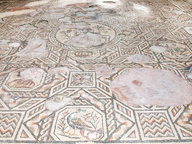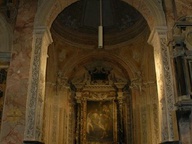Federica Di Carlo. We lost the sea
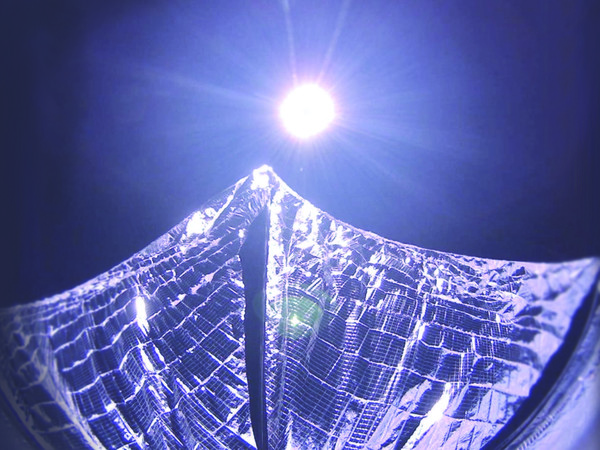
Federica Di Carlo, We lost the sea
From 18 Giugno 2018 to 15 Settembre 2018
Palermo
Place: Arsenale della Marina Regia
Address: via dell'Arsenale 142
Times: Monday 18th June from 10:00 am to 9:00 pm From 19th June 2018, the timetable will return to normal: Monday, Tuesday, Thursday from 8:00 am to 5:00 pm Wednesday, from 8:00 am to 6:30 pm Friday from 8:00 am to 3:00 pm
Responsibles: Simona Brunetti
Organizers:
- Soprintendenza del Mare della Regione Sicilia
- Fondazione Mondo Digitale
- Patrocinio di Palermo Capitale Italiana della Cultura 2018
Ticket price: free entrance
A great environmental installation that stages the breath of the Earth through its fundamentals elements: sea, light, and atmosphere. It is We lost the sea by Federica Di Carlo (Rome, 1984), an immersive-perceptive artwork that, through a game of subtle and charming balances, invites us to reflect on the current climate situation.
The installation, hosted at the Arsenal of the Royal Navy of Palermo, is curated by Simona Brunetti, promoted by the Sicilian Superintendence of the Sea of Palermo with the Mondo Digitale Foundation and produced by Snaporazverein under the patronage of Palermo Italian Capital of Culture 2018.
Starting from Monday 18th June (opening at 6:00 pm), the ancient “Fabrica della Real Marina”, which has been for centuries an important crossroads of exchanges and relations between populations, will be transformed into a timeless space through which the dynamic process of water, air and light that keeps the Earth alive can be observed. Through a single access road, a real ten-meter pier built inside the Arsenal’s semi-dark room, visitors - in a maximum number of 15 at a time - will enter into an “other world” where big silver kites, representation of wind and atmosphere, float in space at several meters high, creating a constantly moving reflection of light in the environment, similar to sea waves.
The sea, that is also represented and kept in large tanks, where the artist will actually pour the water of Palermo’s sea, a visual and cultural symbol of the local ecological situation. Usually placed on the roofs of the city, the tanks collecting rainwater guarantee survival in case of emergency during daily life.
“The subtle balance that holds these elements together, each of which carries in itself complex natural and cultural universes, is the same that keeps Earth alive since the dawn of time and is based on an elementary physical law: the amount of water which evaporates must be almost the same of that which returns to Earth in the form of rainfall”, explains the curator Simona Brunetti.
Therefore, the element of water carries a strong cultural and ecological symbolism.
Actually present in the exhibition, it becomes a jumble of individual stories and a crossroads of cultures, rising to the universal metaphor of water of the whole Earth, the one that, as scientific literature tells us, freed itself from the primordial magma following an evaporation process, covering the whole globe. This process made life on the planet possible millions of years ago and it is still decisive in order to guarantee its maintenance today.
As this very delicate system risks to be strongly compromised by global warming, it has been studied by scientists for years but it is also a topic that has long been examined at the level of politics and international cultural debate.
The artwork is part of a series of reflections on the current climate situation, generated by personal research that Federica Di Carlo has carried out in recent years in collaboration with the physicists of various scientific department such as: MIT (Boston), CERN (Geneva), INAF (Rome/Milan).
We lost the sea stresses this theme, analysing it from a scientific and ecological point of view, but also transposing it onto a cultural level. Mixing a “scientific” level and a “poetic” one, the work of Federica Di Carlo plays at the same time on the double front of participation and fruition of the artwork by the territory.
It is not a coincidence that the Arsenal of the Royal Navy has been identified as an ideal space to host the installation: a border area of excellence, under which the sea of Palermo still flows today, becomes a symbol of those “interference’s areas” and those liminal territories on which the artist’s research its focuses.
“Accomplice to such interference, the sea exists in her work as a great activator of energies, stories and destinies, both individual - we can consider the current immigration stories that make Palermo a place always at the centre of international news - and planetary.” (Simona Brunetti).
The installation, hosted at the Arsenal of the Royal Navy of Palermo, is curated by Simona Brunetti, promoted by the Sicilian Superintendence of the Sea of Palermo with the Mondo Digitale Foundation and produced by Snaporazverein under the patronage of Palermo Italian Capital of Culture 2018.
Starting from Monday 18th June (opening at 6:00 pm), the ancient “Fabrica della Real Marina”, which has been for centuries an important crossroads of exchanges and relations between populations, will be transformed into a timeless space through which the dynamic process of water, air and light that keeps the Earth alive can be observed. Through a single access road, a real ten-meter pier built inside the Arsenal’s semi-dark room, visitors - in a maximum number of 15 at a time - will enter into an “other world” where big silver kites, representation of wind and atmosphere, float in space at several meters high, creating a constantly moving reflection of light in the environment, similar to sea waves.
The sea, that is also represented and kept in large tanks, where the artist will actually pour the water of Palermo’s sea, a visual and cultural symbol of the local ecological situation. Usually placed on the roofs of the city, the tanks collecting rainwater guarantee survival in case of emergency during daily life.
“The subtle balance that holds these elements together, each of which carries in itself complex natural and cultural universes, is the same that keeps Earth alive since the dawn of time and is based on an elementary physical law: the amount of water which evaporates must be almost the same of that which returns to Earth in the form of rainfall”, explains the curator Simona Brunetti.
Therefore, the element of water carries a strong cultural and ecological symbolism.
Actually present in the exhibition, it becomes a jumble of individual stories and a crossroads of cultures, rising to the universal metaphor of water of the whole Earth, the one that, as scientific literature tells us, freed itself from the primordial magma following an evaporation process, covering the whole globe. This process made life on the planet possible millions of years ago and it is still decisive in order to guarantee its maintenance today.
As this very delicate system risks to be strongly compromised by global warming, it has been studied by scientists for years but it is also a topic that has long been examined at the level of politics and international cultural debate.
The artwork is part of a series of reflections on the current climate situation, generated by personal research that Federica Di Carlo has carried out in recent years in collaboration with the physicists of various scientific department such as: MIT (Boston), CERN (Geneva), INAF (Rome/Milan).
We lost the sea stresses this theme, analysing it from a scientific and ecological point of view, but also transposing it onto a cultural level. Mixing a “scientific” level and a “poetic” one, the work of Federica Di Carlo plays at the same time on the double front of participation and fruition of the artwork by the territory.
It is not a coincidence that the Arsenal of the Royal Navy has been identified as an ideal space to host the installation: a border area of excellence, under which the sea of Palermo still flows today, becomes a symbol of those “interference’s areas” and those liminal territories on which the artist’s research its focuses.
“Accomplice to such interference, the sea exists in her work as a great activator of energies, stories and destinies, both individual - we can consider the current immigration stories that make Palermo a place always at the centre of international news - and planetary.” (Simona Brunetti).
SCARICA IL COMUNICATO IN PDF
COMMENTI

-
 Dal 20 aprile 2024 al 27 ottobre 2024
Conversano | Castello Conti Acquaviva D'Aragona
Dal 20 aprile 2024 al 27 ottobre 2024
Conversano | Castello Conti Acquaviva D'Aragona
-
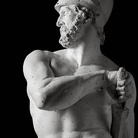 Dal 20 aprile 2024 al 29 settembre 2024
Possagno | Museo Gypsotheca Antonio Canova
Dal 20 aprile 2024 al 29 settembre 2024
Possagno | Museo Gypsotheca Antonio Canova
-
 Dal 20 aprile 2024 al 21 luglio 2024
Torino | Mastio della Cittadella
Dal 20 aprile 2024 al 21 luglio 2024
Torino | Mastio della Cittadella
-
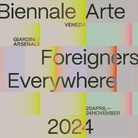 Dal 20 aprile 2024 al 24 novembre 2024
Venezia | Sedi varie
Dal 20 aprile 2024 al 24 novembre 2024
Venezia | Sedi varie
-
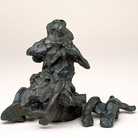 Dal 16 aprile 2024 al 15 settembre 2024
Venezia | Gallerie dell’Accademia
Dal 16 aprile 2024 al 15 settembre 2024
Venezia | Gallerie dell’Accademia
Willem de Kooning and Italy
-
 Dal 17 aprile 2024 al 22 settembre 2024
Venezia | Ateneo Veneto
Dal 17 aprile 2024 al 22 settembre 2024
Venezia | Ateneo Veneto


